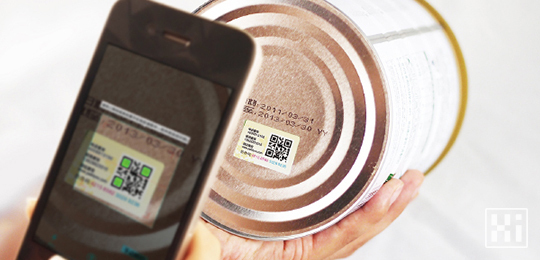Why do companies need anti-counterfeiting traceability systems? What are the advantages of anti-counterfeiting traceability?
With the rapid development of our country's economy, problems with fast-moving consumer goods such as food, milk powder, dairy products, and daily cosmetics have also emerged one after another. Faced with this fundamental issue concerning people's livelihoods, it requires the joint efforts of national legal supervision, internal enterprise supervision, and consumer market inspection to solve it. In order to curb this anti-counterfeiting and anti smuggling phenomenon, the country has introduced many relevant policies and regulations. For example, the newly revised Food Safety Law stipulates that the state shall establish a full traceability system for food safety, and food producers and operators shall establish a food safety traceability system in accordance with the provisions of this law to ensure the traceability of food.
一、 What is anti-counterfeiting traceability
Anti counterfeiting traceability, also known as VFRONT information traceability, believes that information traceability labels (including QR codes, barcodes, RFID) play an important role in anti-counterfeiting traceability. How to completely eliminate counterfeit and shoddy products from the root? Simply verifying product manufacturer information is no longer enough to meet market demand. While anti-counterfeiting, monitoring product raw materials, production, warehousing, and logistics information has become the main trend in anti-counterfeiting development in recent years. The anti-counterfeiting traceability system has thus developed into an independent branch of the anti-counterfeiting system and continues to grow. The characteristics of large storage capacity, accuracy, and speed of QR codes determine that they play an important role in anti-counterfeiting traceability and have become an essential tool for anti-counterfeiting traceability in the current market.
二、 How to anti-counterfeiting and traceability
QR codes can achieve both anti-counterfeiting and traceability functions. Information storage, process control, information encryption, and verification reading are all completed through QR codes, meeting the demands of various enterprises and consumers for product anti-counterfeiting and traceability.
1. Information storage. The storage forms are diverse, and video, audio, image, and text can be entered. Its storage capacity is currently the largest among anti-counterfeiting tools, and it can store and display various information of products, such as institutional certification certificates, inspection certificates, production process records, etc., all of which can be displayed to consumers through QR codes.
2. Process control. The production situation, distribution situation, and storage situation can all be reflected in the QR code, making the anti-counterfeiting information displayed in detail. Consumers can increase their trust in the brand from various details. At the same time, counterfeiters have no ability to imitate the details, which strikes down counterfeiters from the root.
3. Information encryption. The multiple ways of reading QR codes determine the different information displayed by users. Professional reading devices can not only read encrypted information, but also activate anti-counterfeiting codes. Only activated anti-counterfeiting codes can be read by consumers. Even if the information is illegally copied, it cannot be read without the product being sold.
4. Verify the read information. Consumers can use their mobile phones to scan product information by aligning the camera with the QR code, achieving anti-counterfeiting and real-time anti-counterfeiting measures for everyone.

三、 The role of anti-counterfeiting traceability
1. Improving product reputation: Consumers are unable to verify anti-counterfeiting information, resulting in a lack of trust in the product. QR code anti-counterfeiting verification has become popular, simple, and convenient, without consumers bearing any costs, thus increasing the anti-counterfeiting verification rate. The traceability function makes consumers more confident and provides a deeper understanding of the product, enhancing their trust in the product brand.
2. Protecting brand interests. Many counterfeiters take advantage of the lack of anti-counterfeiting labels or the easy replication of anti-counterfeiting labels in their products, resulting in rampant counterfeit and inferior products in the market. The reputation of counterfeit brands is damaged, leading to a decrease in product sales and huge economic losses. Good product quality is the foundation for establishing a corporate brand, and the anti-counterfeiting traceability function of QR codes plays a protective role for corporate brands, helping them lay a solid foundation.
Applicable industries: dairy products, vegetables and fruits, edible oil, rice, alcoholic beverages, health products, medical equipment, processing and manufacturing of electronic products, home furnishings, automobiles, clothing, cosmetics, logistics industry product transportation ..


 Try Now
Try Now




